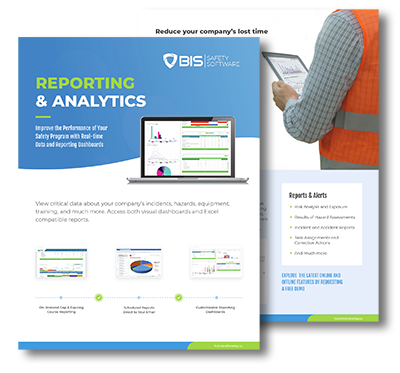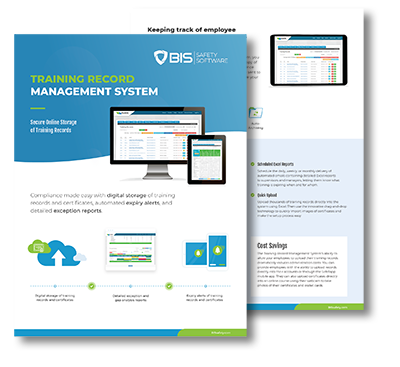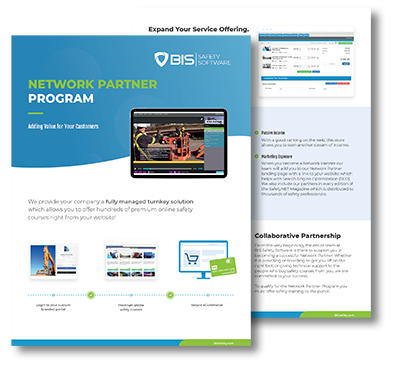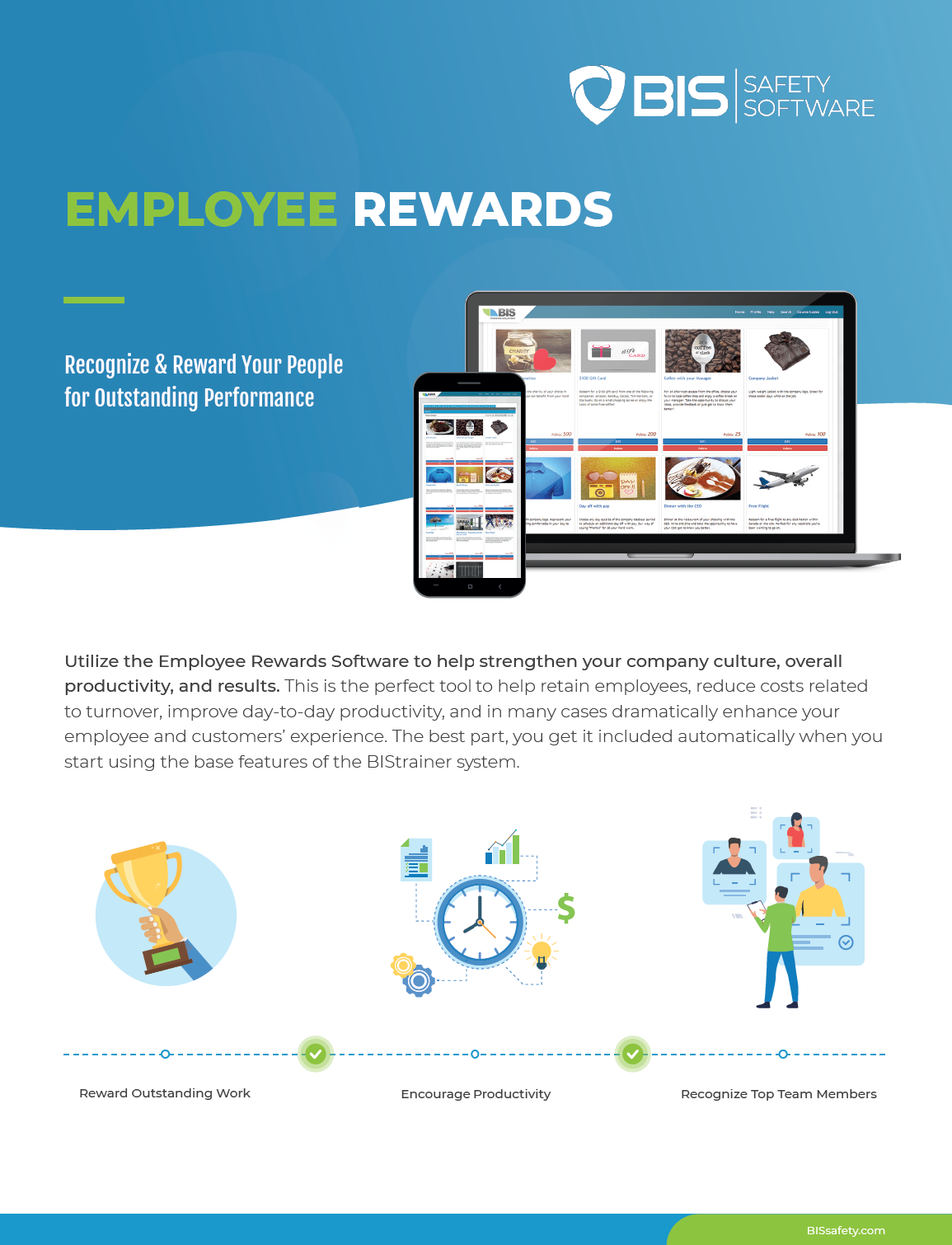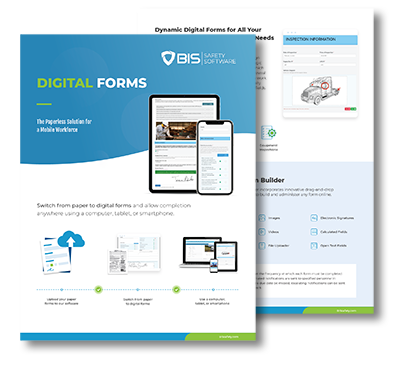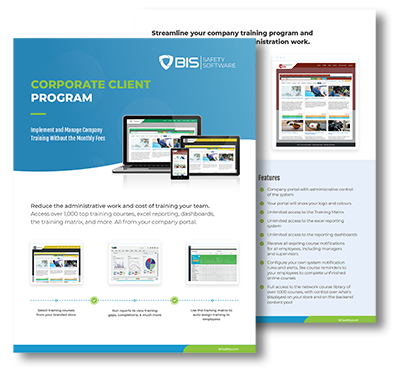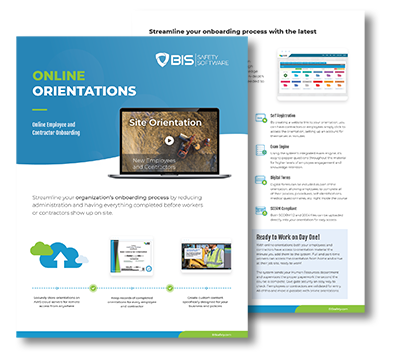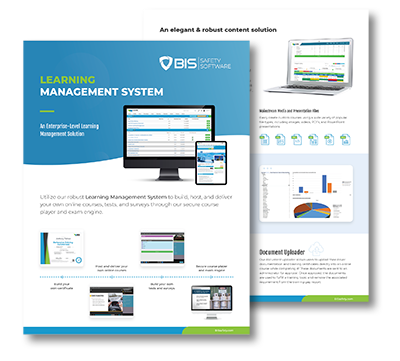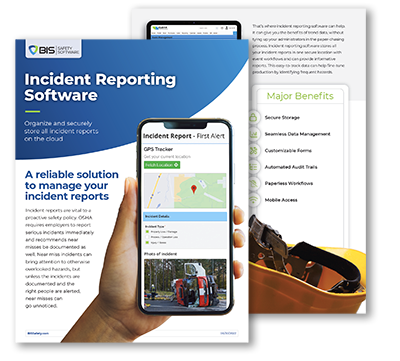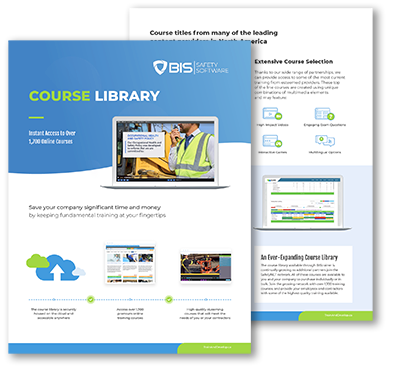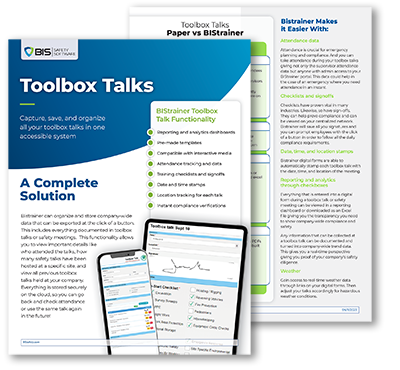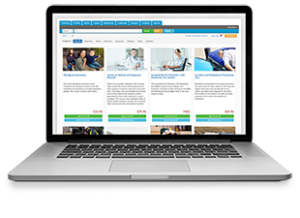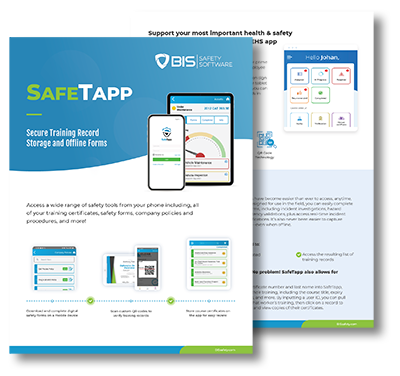Table Of Contents:
- How Construction Safety Software Ensures Compliance Success
- Understanding Construction Safety Management Software Solutions
- Benefits of Using Construction Safety Management Software for Compliance
- How to Choose the Right Construction Safety Management Software Solution
- Best Practices for Implementing Construction Safety Management Software
- Case Studies of Successful Software Implementation in Construction
- Future Trends in Construction Safety Management Software
- Conclusion
How Construction Safety Software Ensures Compliance Success
Construction safety management software is essential for ensuring compliance in a highly regulated industry. Without the right tools, navigating safety regulations can be overwhelming and prone to errors. This article will discuss how construction safety software streamlines compliance efforts, the benefits of utilizing these solutions, and best practices for effective implementation. By addressing common compliance challenges, this content will provide strategies that help safety managers improve safety training management and foster a culture of safety on construction sites. Engage with this guide to enhance compliance success and mitigate risks effectively.
Understanding Construction Safety Management Software Solutions

Construction safety management software is essential for ensuring compliance within the industry. Key components of effective safety management systems include robust visibility and automation features that streamline operations. Common tools, often enhanced by cloud computing, improve efficiency in tracking safety training and incidents. Emphasizing compliance helps organizations minimize risks and uphold safety standards, ultimately benefiting customers and stakeholders.
Definition of Construction Safety Management Software
Construction safety management software serves as a vital tool for organizations aiming to improve their risk management strategies. By integrating features that facilitate root cause analysis and analytics, this software allows safety managers to identify and address hazards before they escalate into serious incidents. This proactive approach not only enhances the safety culture within a company but also ensures adherence to industry regulations, which is essential for maintaining operational efficiency.
Furthermore, construction safety management software streamlines documentation processes and training tracking, enabling organizations to operate with greater effectiveness. Improved visibility into safety practices allows managers to make informed decisions that promote accountability and compliance across all levels of the organization. By leveraging these technologies, companies can mitigate risks, resulting in safer work environments and enhanced project outcomes, ultimately benefiting all stakeholders involved.
Key Components of Effective Safety Management Systems
Key components of effective safety management systems include an emphasis on fostering a positive safety culture and integrating process safety principles. A safety culture encourages open communication and accountability, leading to better adherence to safety protocols among employees. In practice, organizations can develop this culture by providing ongoing training and resources, such as access to relevant white papers that inform staff about best safety practices and regulatory requirements.
Furthermore, sustainability plays a critical role in long-term safety management systems. By implementing software solutions that track and analyze safety metrics, organizations can identify trends and areas for improvement. For instance, a management system that automates report generation allows safety managers to focus on proactive measures rather than reactive responses, ultimately advancing both compliance and project outcomes. This strategic approach assures stakeholders that safety is prioritized, thus enhancing organizational reputation and operational efficiency.
Common Features and Tools in Safety Management Software
Construction safety management software typically includes a range of features that focus on enhancing workplace safety and supporting workforce management. These tools facilitate robust tracking of safety training and compliance, enabling organizations to easily monitor employee progress and certification statuses. For instance, integrated training modules ensure that all team members receive the necessary education on safety practices, which is critical for maintaining industry standards and reducing workplace incidents.
In addition to training features, effective safety management software often incorporates elements of quality management and environmental, health, and safety (EHS) management. This integration allows organizations to oversee safety protocols and operational processes simultaneously, ensuring a comprehensive approach to compliance. By utilizing real-time reporting and analytics, safety managers can make informed decisions that drive continuous improvement, thereby enhancing overall safety culture and organizational reputation.
Importance of Compliance in the Construction Industry
Compliance within the construction industry is imperative for ensuring workplace safety and minimizing accidents. Effective process safety management requires organizations to diligently document safety procedures and training, helping to cultivate a culture of accountability among employees. By prioritizing compliance, companies can enhance the use of personal protective equipment and promote safe behavior, ultimately leading to a reduction in workplace incidents and liabilities.
The importance of rigorous inspection procedures cannot be overstated in ensuring compliance. Regular inspections not only verify adherence to safety standards but also identify areas for improvement within safety protocols. Through proactive compliance measures, organizations can demonstrate their commitment to safety while positioning themselves favorably with clients and stakeholders, thus enhancing overall project success.
Effective safety management software can make the difference between compliance and failure. Understanding its benefits is vital for every construction safety manager.
Benefits of Using Construction Safety Management Software for Compliance

Construction safety management software significantly aids compliance by streamlining compliance processes, enhancing communication and collaboration among teams, and improving documentation and recordkeeping. Effective ehs software solutions facilitate training and ongoing education, fostering employee engagement in safety initiatives. This integrated approach ensures robust incident management and product stewardship while meeting compliance training requirements, ultimately supporting a safer work environment.
Streamlining Compliance Processes
Streamlining compliance processes is a critical aspect of enhancing safety culture within construction companies. Effective EHS management software offers tools such as checklists and hazard analysis features that enable safety managers to systematically address compliance requirements. By automating routine documentation and reporting tasks, organizations can minimize administrative burdens, allowing teams to focus more on proactive safety measures and training initiatives.
The integration of EHS software into daily operations not only simplifies compliance tracking but also fosters communication among team members. Real-time data sharing ensures that everyone is aware of safety protocols and responsibilities, contributing to a consistent safety culture across all levels of the organization. With streamlined processes, companies can better manage incidents and training, ultimately leading to a greater adherence to safety regulations and a reduction in workplace accidents.
Enhancing Communication and Collaboration
Effective communication is crucial for maintaining compliance in construction projects, and safety management software enhances this by streamlining workflows among teams. By providing a centralized system for sharing updates, safety protocols, and risk assessments, all team members stay informed and engaged. This transparency encourages collaboration, ensuring that safety initiatives are implemented consistently and understood by everyone involved.
Moreover, enhanced communication supported by safety management software simplifies the audit process. With easy access to documentation and real-time reporting, safety managers can quickly review compliance metrics and identify areas needing improvement. This proactive approach not only facilitates timely risk assessments but also fosters a culture of accountability, ultimately contributing to a safer work environment and ensuring projects meet regulatory standards.
Improving Documentation and Recordkeeping
Implementing a safety management system revolutionizes documentation and recordkeeping in the construction industry. Construction site safety software automates data entry and reporting tasks, ensuring that critical safety records are accurately maintained and easily accessible. This streamlined approach not only enhances productivity but also minimizes the risk of non-compliance with regulatory standards, allowing organizations to focus more on proactive safety measures.
Additionally, an effective safety management system helps in maintaining comprehensive records of training, incidents, and inspections. This level of thorough documentation not only supports regulatory compliance but also serves as a crucial resource for audits and safety assessments. By leveraging construction safety software, organizations can efficiently track safety metrics over time, leading to improved safety culture and better decision-making based on data-driven insights.
Facilitating Training and Continuing Education
Construction safety management software plays a vital role in facilitating training and continuing education for employees, crucial for compliance with health and safety regulations. By incorporating training modules and resources focused on environmental health topics, organizations ensure that workers receive up-to-date information on recognizing hazards and applying safety measures. This proactive approach cultivates a knowledgeable workforce, better equipped to handle safety challenges on job sites.
Moreover, effective software solutions streamline the tracking of employee training progress, allowing safety managers to identify gaps in knowledge and address them promptly. Regular updates on regulatory changes related to health and safety empower construction teams to adapt swiftly, minimizing risks and promoting a culture of continuous improvement. Engaging employees through these educational tools not only enhances compliance success but ultimately contributes to a safer working environment.
Choosing the right construction safety management software can sharpen compliance efforts. The following guide will lead you to the best solution for your team’s needs.
How to Choose the Right Construction Safety Management Software Solution

Choosing the right construction safety management software requires careful consideration of several key factors. Organizations should begin by assessing their specific needs to ensure alignment with compliance goals. Evaluating software features against compliance requirements is crucial, particularly for tools like job safety analysis apps accessible via mobile devices. User experience and accessibility must also be prioritized, along with comparing pricing models and support options to optimize the use of resources within the supply chain.
These topics provide a structured approach to selecting software that enhances risk management while facilitating effective communication and training across the organization. Understanding these elements ensures that safety managers make informed decisions that support overall compliance success.
Assessing Your Organization‘s Needs
Assessing an organization’s needs is a critical first step in selecting construction safety management software. Safety managers should evaluate their existing processes for tracking training, compliance, and equipment management. For instance, understanding how machinery and assets are currently monitored can highlight areas where software can streamline operations and improve compliance accuracy.
Engaging with stakeholders throughout the organization helps identify specific requirements, such as the need for an integrated learning management system. By gathering input from various teams, safety managers can ensure the chosen software aligns with compliance goals and facilitates effective training. This approach not only reduces potential risks but also enhances the overall effectiveness of safety initiatives.
Evaluating Software Features Against Compliance Requirements
When evaluating construction safety management software, organizations must ensure that the features align directly with their compliance requirements. Essential components include tools for tracking training and documenting safety procedures, as these are critical for maintaining adherence to industry regulations. For instance, software should offer capabilities for generating compliance reports and tracking certifications, allowing safety managers to monitor employee readiness and training effectiveness in real time.
Moreover, integration with existing safety protocols is vital. A robust safety management solution should facilitate easy documentation of inspections and incident reporting while providing analytics for risk assessment. By choosing software that supports their specific compliance needs, organizations can enhance operational efficiency and ensure that safety practices are consistently upheld across the workforce, ultimately leading to a safer construction environment.
Considering User Experience and Accessibility
When selecting construction safety management software, user experience is a paramount consideration. A user-friendly interface ensures that safety managers and employees can navigate the system efficiently, which promotes consistent engagement with safety protocols. Designing the software with intuitive navigation not only reduces training time but also minimizes the likelihood of errors that could compromise compliance and safety standards.
Accessibility is equally crucial in construction environments, where fieldwork is common. Software solutions that offer mobile compatibility enable safety managers to access training materials, incident reports, and compliance metrics from any location. This ensures that team members stay informed and engaged with safety practices, ultimately fostering a culture of compliance throughout the organization while facilitating prompt responses to safety issues as they arise.
Comparing Pricing Models and Support Options
When choosing construction safety management software, organizations should carefully compare pricing models to identify the most cost-effective solution. It is essential to analyze whether pricing is based on a flat rate, a subscription model, or a pay-per-use basis. Each model has its advantages; for instance, subscription models often include ongoing updates and support, ensuring that safety managers have access to the latest compliance tools without additional costs over time.
In addition to pricing, support options play a crucial role in ensuring a successful implementation of the software. Organizations should look for vendors that provide comprehensive customer service, including training resources and ongoing technical assistance. Having access to knowledgeable support can significantly enhance user experience and compliance success, as it allows safety managers to maximize the software’s features while effectively addressing any challenges that may arise during utilization.
With the right software in hand, the next step is clear. Implementing these tools with purpose will shape a safer work environment for everyone.
Best Practices for Implementing Construction Safety Management Software

Securing leadership buy-in and support is essential for the successful implementation of construction safety management software. Setting clear objectives and expectations provides a roadmap for all stakeholders involved. Training staff on new software tools ensures effective utilization, while monitoring and evaluating software effectiveness identifies areas for improvement. Each of these aspects plays a critical role in maximizing compliance success within the organization.
Securing Leadership Buy-in and Support
Gaining leadership buy-in is a crucial step in the successful implementation of construction safety management software, as support from the top influences overall commitment to compliance. Leaders need to understand the benefits of the software, such as improved risk management and streamlined compliance processes, to foster an environment that prioritizes safety. Engaging leadership early in the evaluation process ensures alignment with organizational goals, making it easier for safety managers to secure the necessary resources and support for effective implementation.
To reinforce support, safety managers should present data and case studies demonstrating how effective safety software can lead to reduced incidents and improved compliance rates. By showcasing real-world examples of organizations that have successfully utilized safety management systems, leaders can visualize the potential benefits. This evidence-driven approach helps build trust in the software’s value, encouraging top management to champion its usage across all departments, thereby enhancing compliance success within the organization.
Setting Clear Objectives and Expectations
Establishing clear objectives and expectations is crucial during the implementation of construction safety management software. Safety managers should outline specific compliance goals, such as improving training tracking accuracy and enhancing incident reporting. By setting measurable targets, organizations can monitor progress effectively, ensuring that every team member understands their role in achieving compliance success.
Communicating these objectives to all stakeholders fosters a shared commitment to safety and compliance. Safety managers can conduct training sessions to illustrate how the software supports these goals, ensuring every employee recognizes its utility in their daily tasks. This alignment not only improves engagement but also promotes adherence to safety protocols, ultimately leading to a more compliant and safer work environment.
Training Staff on New Software Tools
Training staff on new software tools is a crucial aspect of ensuring compliance success in construction safety management. Organizations should prioritize comprehensive training programs that familiarize employees with the features and functionalities of the safety software. This hands-on approach not only enhances user confidence but also ensures all team members can effectively participate in compliance initiatives, ultimately leading to reduced risks and improved safety outcomes.
Additionally, safety managers should create ongoing support mechanisms, such as workshops or refresher courses, to reinforce training and address any challenges employees may face while using the software. By fostering a culture of continuous learning and encouraging feedback, organizations can ensure that staff remains engaged and adept at utilizing the tools necessary for maintaining compliance and promoting workplace safety.
Monitoring and Evaluating Software Effectiveness
Monitoring and evaluating the effectiveness of construction safety software is a crucial practice for ensuring compliance success. Safety managers should regularly assess key performance indicators such as incident rates, training completion statistics, and compliance documentation accuracy. By analyzing these metrics, they can identify areas for improvement and determine how well the software meets the organization’s safety needs.
Additionally, seeking feedback from employees who use the software daily can provide valuable insights into its functionality and usability. Conducting regular reviews and gathering user input allows safety managers to address challenges promptly and make necessary adjustments to the system. This ongoing evaluation process not only supports compliance efforts but also ensures that tools remain aligned with evolving safety standards and organizational goals.
Implementation is just the beginning. It is in the stories of those who succeeded where true lessons lie, waiting to be learned.
Case Studies of Successful Software Implementation in Construction

Real-world examples illustrate how construction safety software can achieve compliance success through effective implementation. This section will explore the lessons learned from challenges faced during adoption, highlighting strategies for overcoming obstacles. Additionally, specific metrics will be presented to measure compliance success, offering practical insights into how organizations can evaluate their safety management systems effectively.
Real-World Examples of Compliance Success
One notable example of compliance success through the implementation of construction safety software is seen in a large-scale infrastructure project where a construction firm adopted a comprehensive safety management system. By utilizing detailed reporting and real-time analytics, the organization significantly reduced incident rates by 30% within the first year. This proactive approach not only ensured regulatory adherence but also fostered a culture of safety among employees, ultimately enhancing overall project efficiency.
Another case illustrates how a mid-sized construction company integrated safety software to streamline training and compliance tracking. After implementing features that allowed for automated reporting and checklists, the organization achieved full compliance with local regulations, which had previously been a challenge. The software’s capabilities in documentation and real-time updates enabled the management team to identify potential areas of non-compliance early, ensuring safety practices were consistently maintained and leading to improved client trust and project reputation.
Lessons Learned From Implementation Challenges
One of the key lessons learned from implementation challenges in construction safety software is the importance of engaging all stakeholders from the outset. When safety managers involve team members in the software selection and training processes, it creates a sense of ownership and commitment to compliance practices. This collaborative approach not only facilitates smoother transitions but also encourages adherence to safety protocols as employees feel more invested in their role within the safety culture.
Additionally, organizations can benefit from establishing clear communication channels during the implementation phase. By actively seeking feedback from users about the software’s functionality and usability, safety managers can identify potential issues early on and make necessary adjustments. This proactive strategy not only enhances overall user experience but also contributes to maintaining compliance with safety regulations, ultimately supporting a safer work environment.
Metrics for Measuring Compliance Success
Measuring compliance success in construction safety management requires the use of specific metrics that reflect both safety performance and regulatory adherence. Key indicators include incident rates, training completion statistics, and the frequency of safety audits. By tracking these metrics over time, organizations can assess the effectiveness of their safety management software and identify areas that may need further attention or improvement, ultimately promoting a culture of accountability and safety.
Effective construction safety software enables organizations to generate reports that highlight compliance trends and training effectiveness. For example, companies can analyze data to understand the correlation between training programs and a reduction in incidents. These insights not only foster better decision-making among safety managers but also enhance overall project outcomes by ensuring that safety practices are not just maintained but continuously improved upon, benefiting all stakeholders involved.
As the success stories unfold, they reveal the groundwork laid for tomorrow. Looking ahead, safety management will evolve, harnessing technology in ways we are just beginning to understand.
Future Trends in Construction Safety Management Software

The integration of artificial intelligence in construction safety management is transforming compliance success. Safety software now aligns with other construction technologies, facilitating a cohesive approach to risk management. By developing a proactive safety culture, organizations can swiftly adapt to evolving regulatory changes and industry standards, ensuring consistent adherence to safety protocols. Each of these aspects plays a crucial role in enhancing overall safety outcomes.
The Role of Artificial Intelligence in Safety Management
Artificial intelligence (AI) is reshaping the landscape of construction safety management by providing predictive analytics and enhancing risk assessment capabilities. With AI-driven tools, safety managers can identify potential hazards before they materialize, leading to a more proactive approach in maintaining compliance. For instance, machine learning algorithms can analyze historical incident data to forecast areas of concern, allowing organizations to allocate resources effectively and targeted training where it is needed most.
Moreover, AI can streamline compliance reporting by automating documentation processes, minimizing the chances of human error, and ensuring that all safety protocols are consistently met. This technology enhances real-time monitoring of safety practices, ensuring that teams adhere to compliance requirements without losing sight of operational efficiency. As construction companies embrace AI, they gain a competitive edge by fostering a culture of safety that meets evolving regulatory standards and enhances overall project outcomes.
Integration With Other Construction Technologies
Integration of construction safety software with other technologies, such as project management and resource allocation tools, plays a significant role in enhancing compliance success. This connectivity allows safety managers to access real-time data across various platforms, ensuring that all safety protocols align with operational workflows. For instance, integrating software with scheduling systems enables teams to automatically update safety training periods correlating with project timelines, ensuring compliance without disrupting workflow.
By fostering a centralized data environment, organizations can streamline incident reporting and documentation through integration with BIM (Building Information Modeling) technologies. This not only increases efficiency but also improves safety management by visualizing potential hazards within the project framework. Such integrations ultimately empower construction teams to maintain a proactive safety culture, reinforcing compliance and minimizing risks on the job site.
Developing a Proactive Safety Culture
Developing a proactive safety culture within construction organizations is essential for compliance success. Safety management software empowers organizations to cultivate this culture by offering tools that encourage employee engagement in safety initiatives. For instance, by using mobile applications that allow easy access to safety resources and reporting tools, workers can actively participate in identifying hazards and suggesting improvements, thus fostering an environment where safety is prioritized at every level of the organization.
Moreover, consistent use of safety management software facilitates ongoing training and real-time communication, which are pivotal in reinforcing the importance of safety practices. Organizations can implement features such as dashboards displaying safety metrics and incident reports, enabling teams to visualize their safety performance. This transparency not only promotes accountability but also motivates employees to uphold high safety standards, ultimately leading to reduced risks and enhanced compliance across projects.
Adapting to Regulatory Changes and Industry Standards
Construction safety software simplifies the process of adapting to regulatory changes and industry standards by offering real-time updates and compliance tracking features. For instance, when new regulations are introduced, the software can automatically adjust protocols to ensure that organizations remain compliant, minimizing the risk of penalties and legal issues. This functionality empowers safety managers to focus on proactive risk management rather than scrambling to catch up with evolving requirements.
Moreover, effective safety management systems facilitate seamless communication within teams regarding regulatory shifts. By utilizing dashboards and notifications, employees can stay informed about changes in safety standards and best practices, ensuring a unified approach to compliance. This integrated communication fosters a culture of accountability, where all team members are engaged in maintaining compliance and upholding safety protocols throughout the organization.
Conclusion
Construction safety software is vital for ensuring compliance success by streamlining processes, enhancing communication, and improving documentation. By providing tools that facilitate training and real-time monitoring, organizations can foster a proactive safety culture that minimizes risks. This technology empowers safety managers to adhere to regulations effectively, ensuring that all team members remain informed and engaged in safety practices. Ultimately, leveraging construction safety software not only promotes regulatory compliance but also enhances overall workplace safety, safeguarding both employees and projects.



